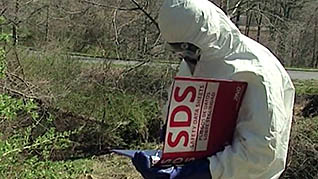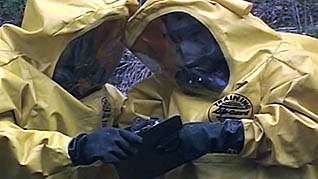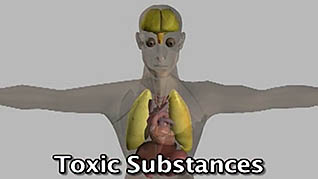HAZWOPER: Understanding Chemical Hazards
- Product ID
- marchwhz_vod
- Training Time ?
- 21 to 28 minutes
- Language(s)
- English,Spanish
- Video Format
- High Definition
- Required Plugins
- None
- Number of Lessons
- 11
- Quiz Questions
- 7
- Question Feedback
- Wrong Answer Remediation
- Lesson Bookmarking
- Downloadable Resources



HAZWOPER: Understanding Chemical Hazards
The online training video shows workers awareness is first and foremost in workplace safety. Employees learn how to use guides such as Material Safety Data Sheets, container labels and a company's hazard communication program for even seemingly harmless items like cleaners and solvents. The video gives examples of how information can make work safe from hazards posed by toxic substances, irritants, combustibles, flammables, corrosives and carcinogens.
The program addresses the varying degrees to which workers are affected by chemicals, the qualities that can further a chemical's hazards and the language used to describe these factors. What to do in case of exposure is also addressed in the video program with a focus on ingestion, inhalation, exposure to eyes, and splashes and spills.
This course has been updated to include GHS container labels and Safety Data Sheets (SDS) for GHS compliance.
![]() This course is in the Video On Demand format, to read about Video On Demand features click here.
This course is in the Video On Demand format, to read about Video On Demand features click here.

- Install on any SCORM LMS
- Full-screen video presentation
- Print certificate and wallet card
- You have 30 days to complete the course
Workers who use or may be exposed to hazardous chemical substances
- Introduction
- Safety Data Sheets
- Container Labels
- The Written Hazard Communication Program
- Toxins, Corrosives And Irritants
- Flammables, Combustibles And Gases
- Carcinogens And Radiation
- Exposure Situations
- Personal Protective Equipment And Storage
- Spills And Clean-Up
- Conclusion
© Mastery Technologies, Inc.




